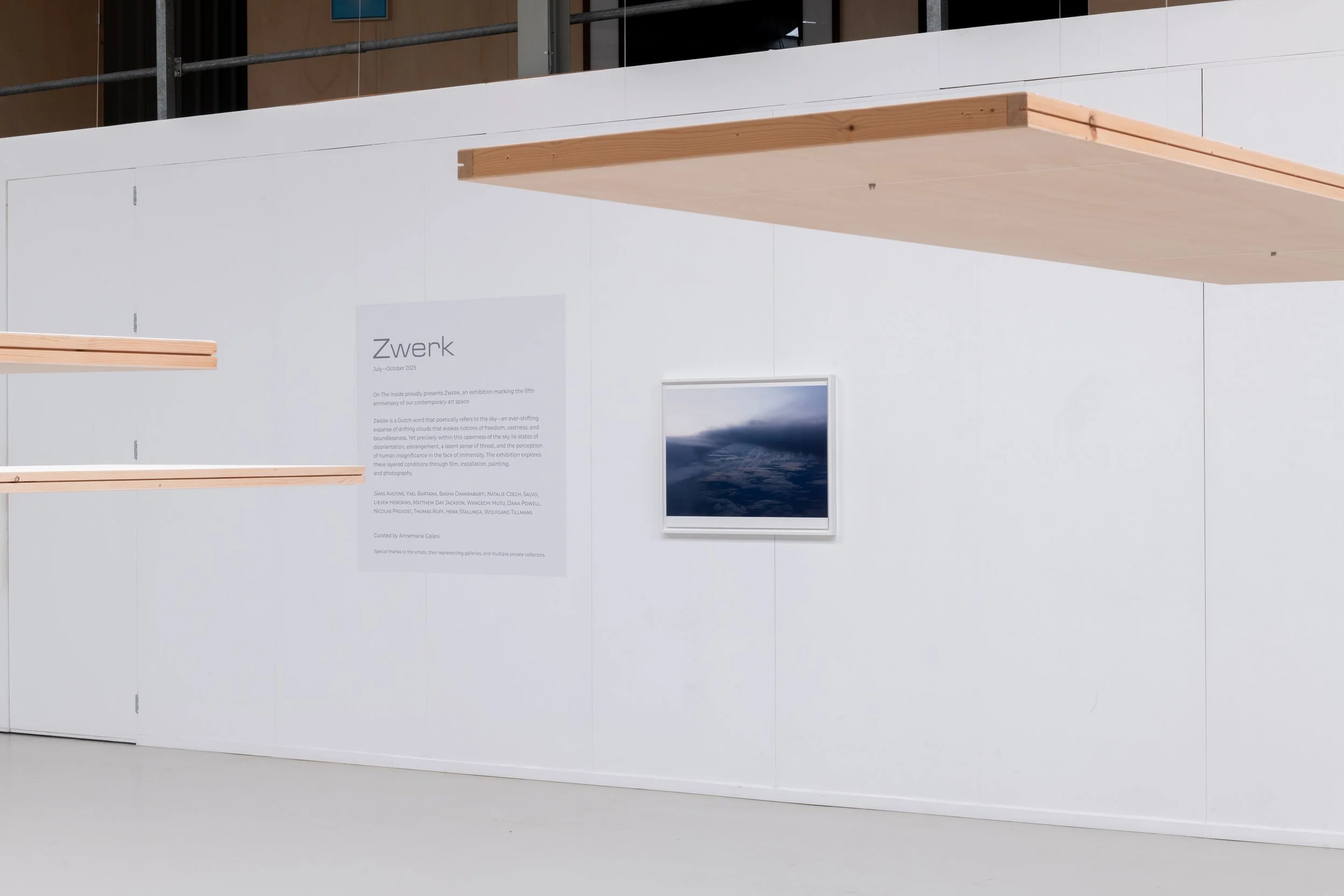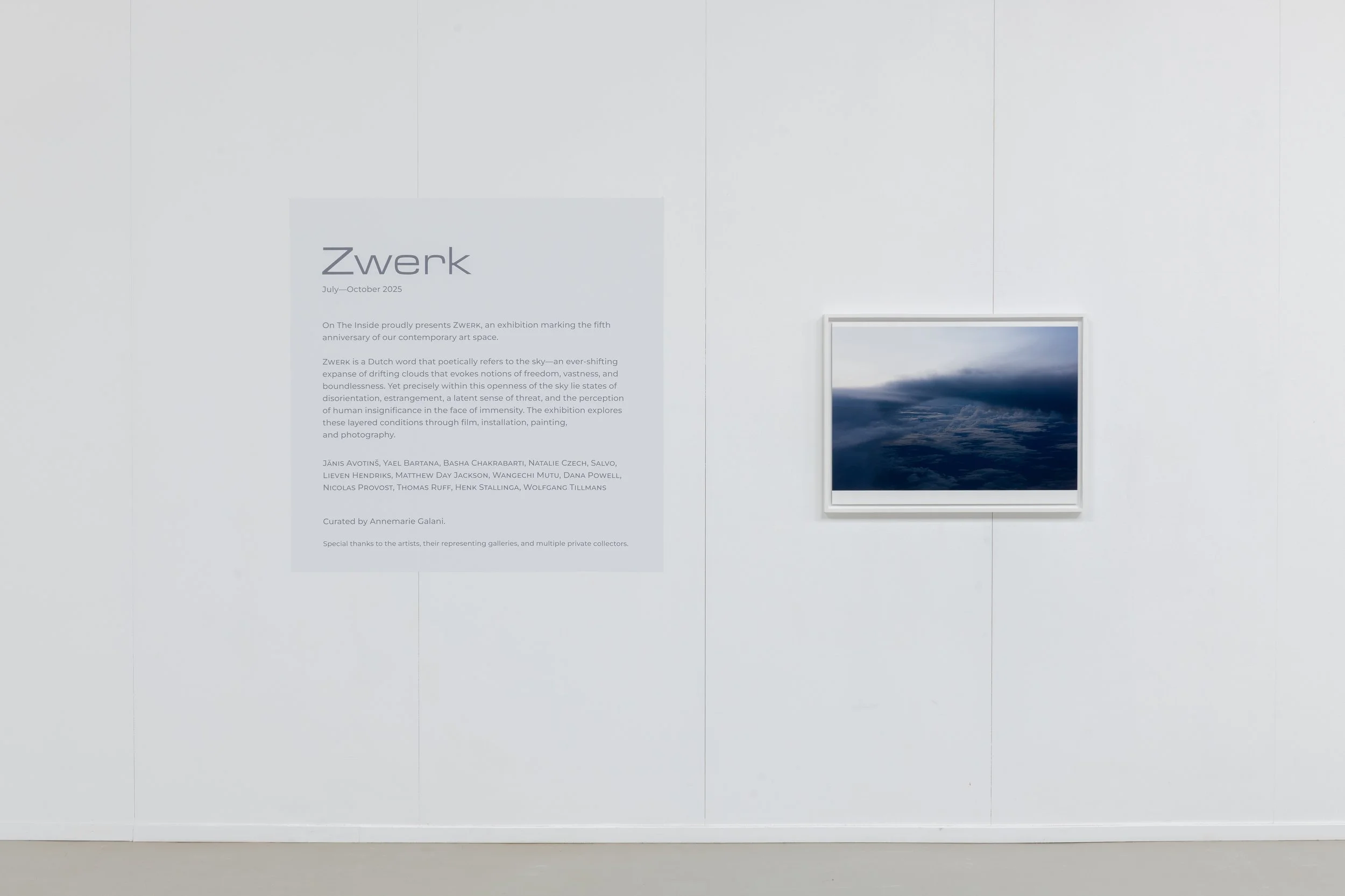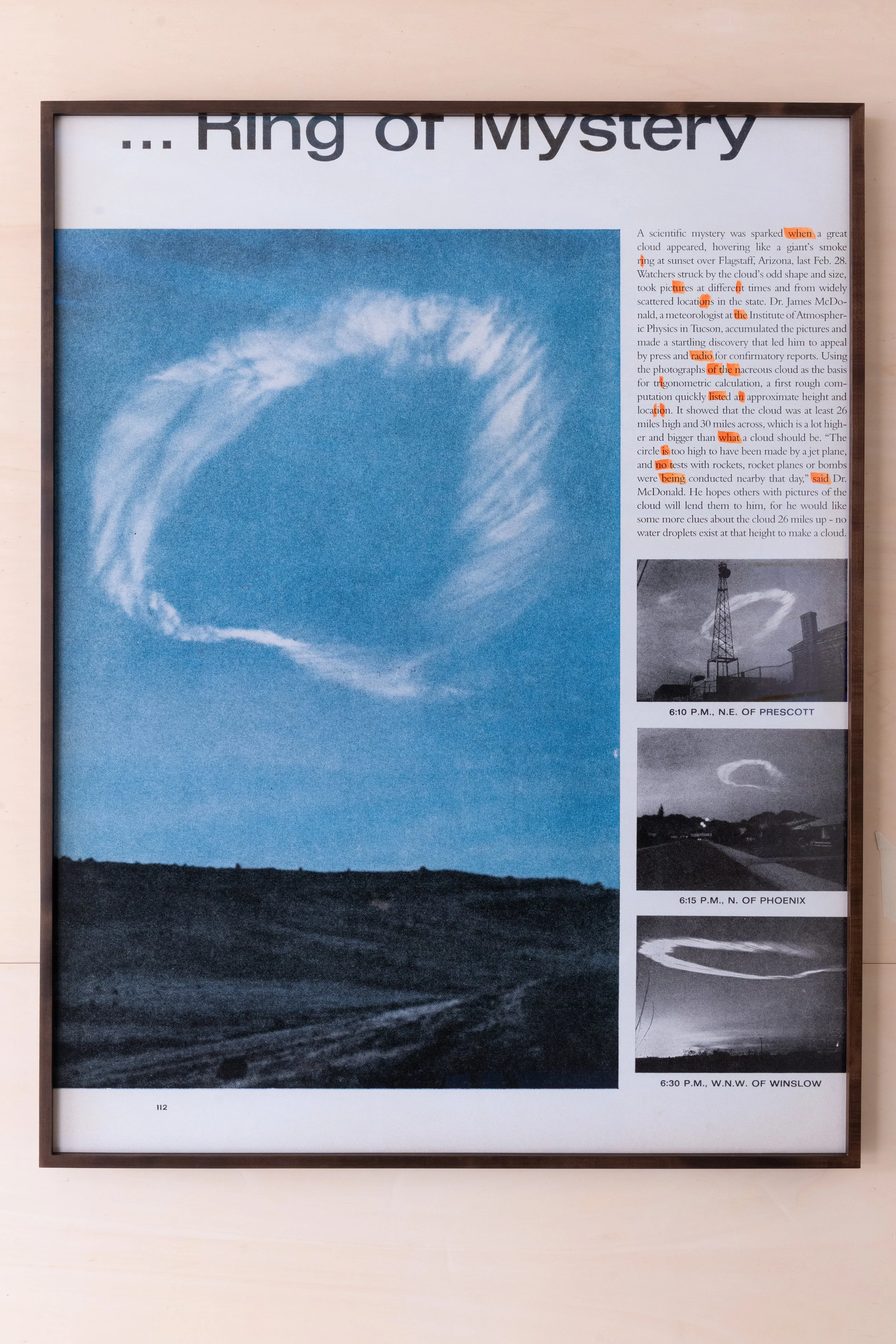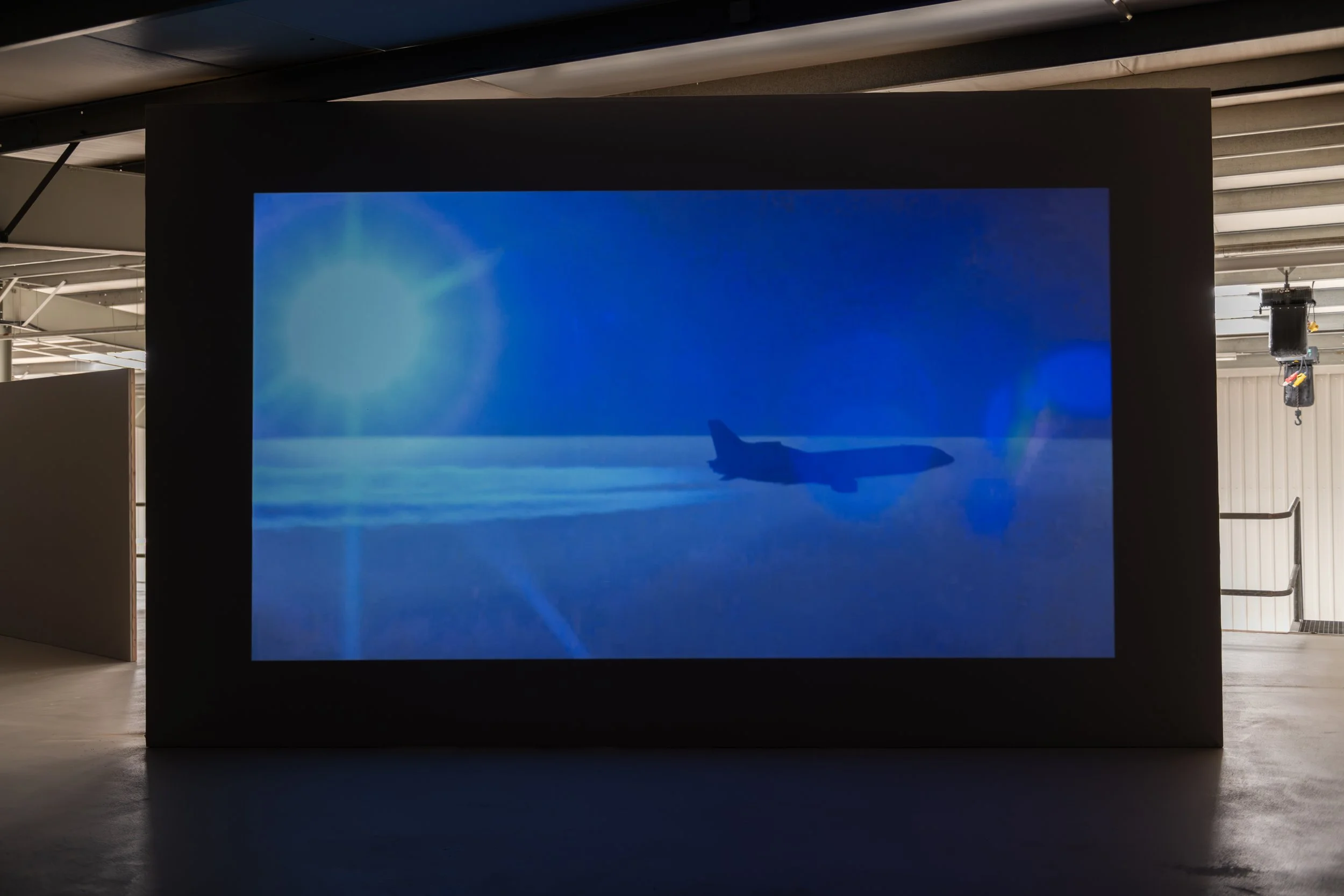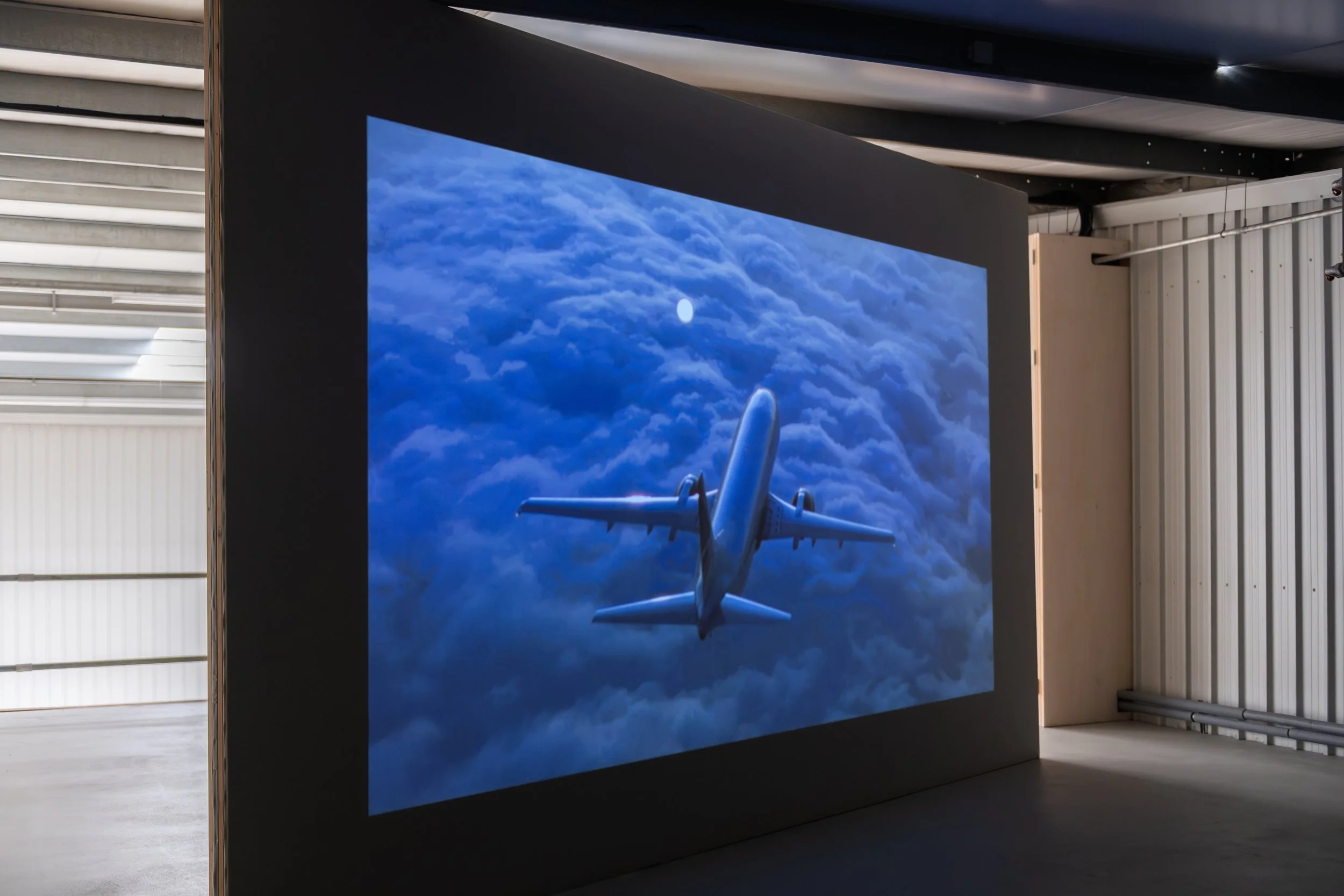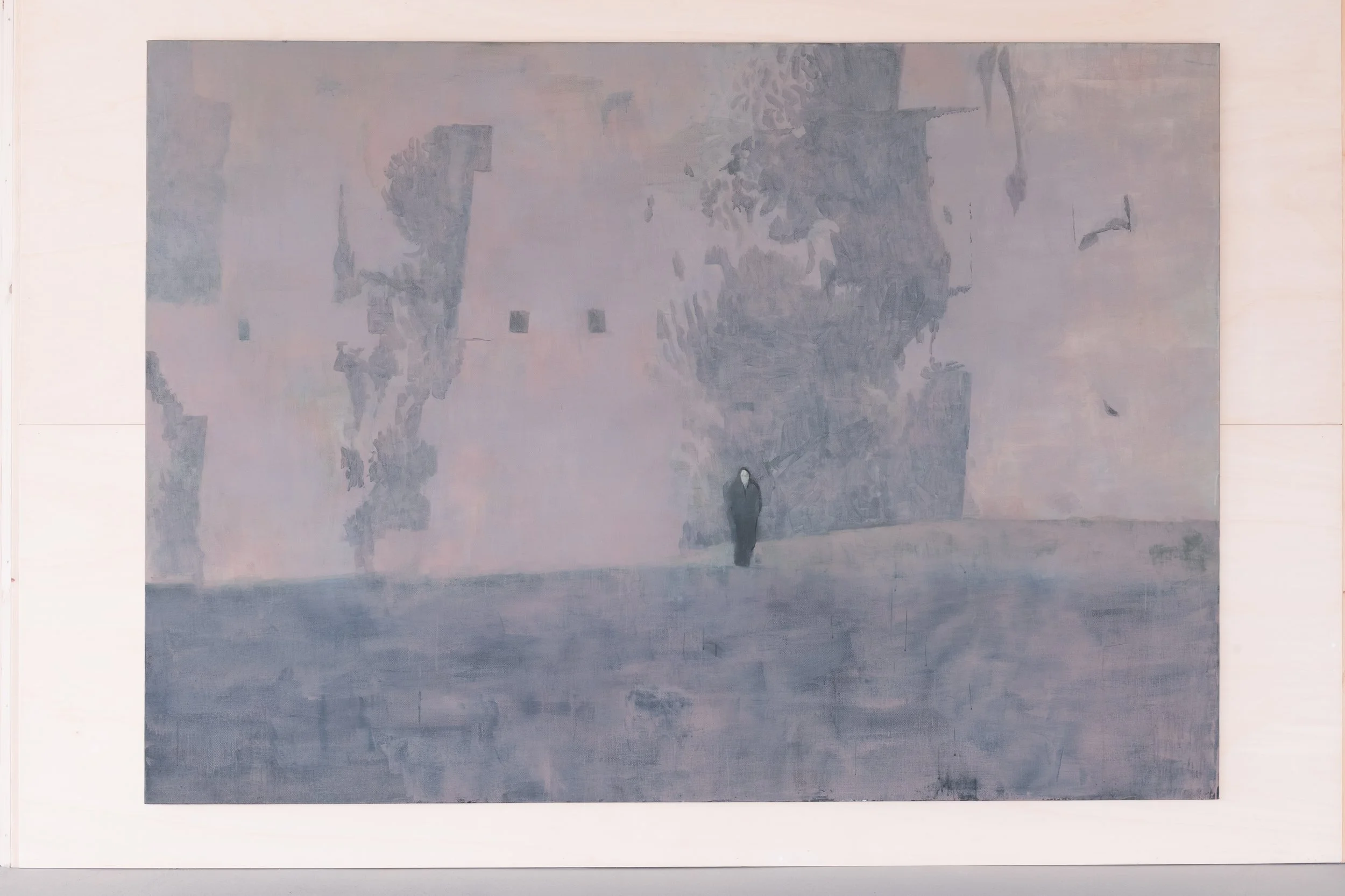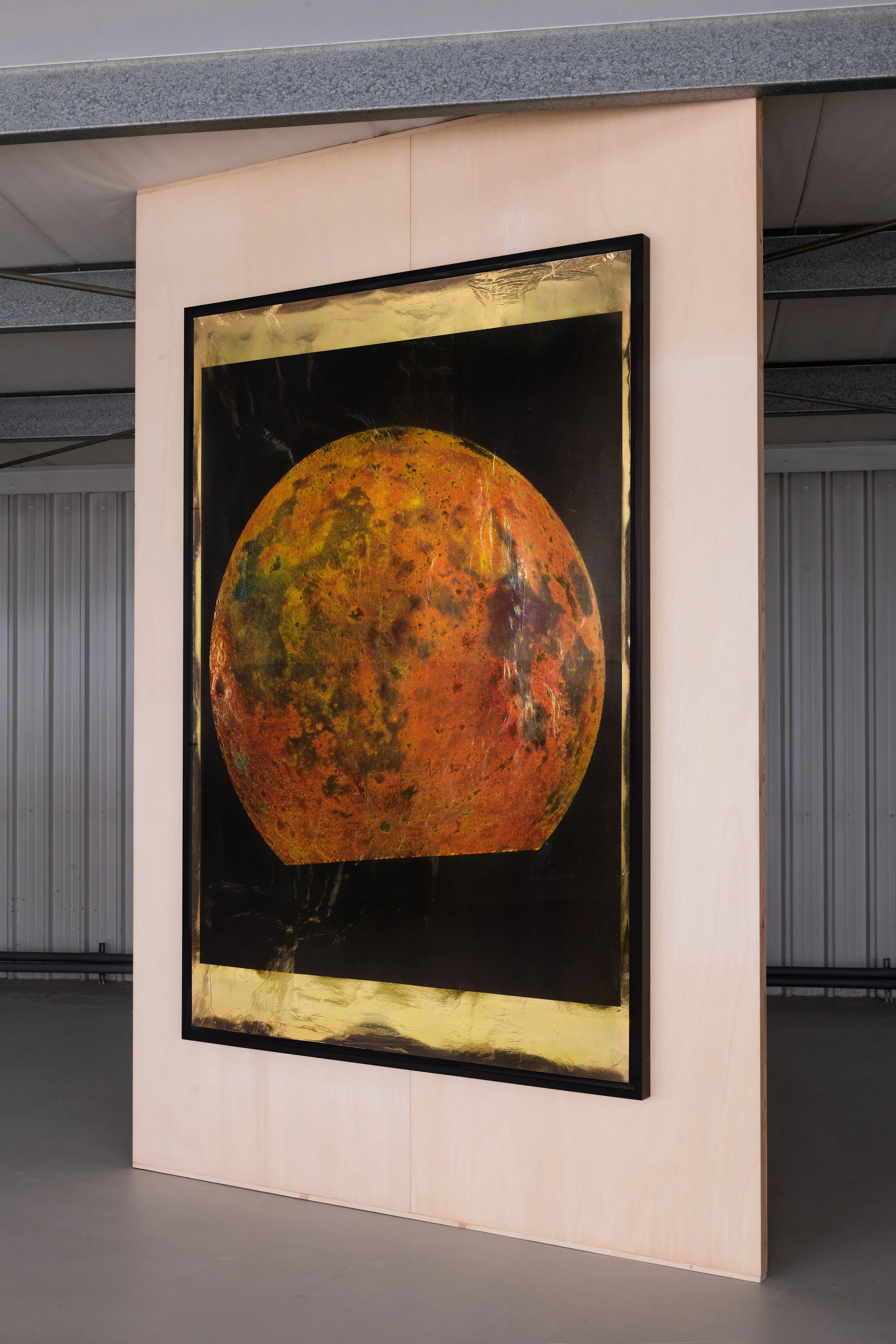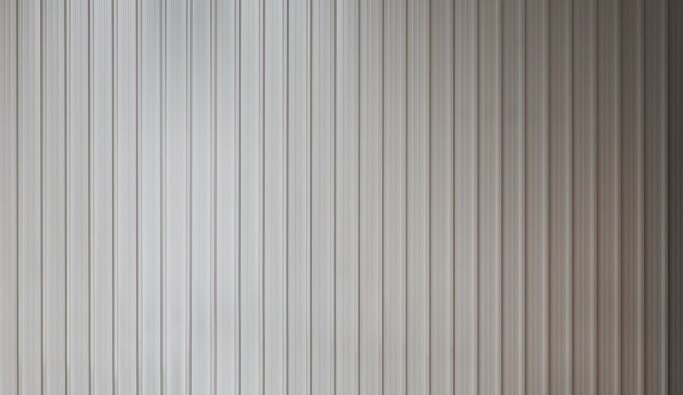
Zwerk
Press Release and Images
Sunburst (2025), Lieven Hendriks
Zwerk
19 July, 2025 - 4 January, 2026
On The Inside proudly presents Zwerk, an exhibition marking the fifth anniversary of our contemporary art space.
Zwerk is a Dutch word that poetically refers to the sky — an ever-shifting expanse of drifting clouds that evokes notions of freedom, vastness, and boundlessness. Yet precisely within this openness of the sky lie states of disorientation, estrangement, a latent sense of threat, and the perception of human insignificance in the face of immensity. The exhibition explores these layered conditions through film, installation, painting, and photography.
Installation views of exhibition
Click on image to download
Zwerk PR Material
19 July, 2025 - 4 January, 2026
Wolfgang Tillmans (b. 1968, Germany)
‘Amazon’ 2013
Inkjet print on paper, 68.9 x 90.4 cm
Courtesy of the artist and David Zwirner Gallery, New York | Hong Kong, Galerie Buchholz, Berlin | Cologne, Maureen Paley, London, the Ekard Collection
Amazon (2013) presents a near-abstract image of cloud cover dissolving into a grey atmosphere. The absence of horizon and scale creates a disorienting space that resists fixed interpretation: Zwerk The work evokes a state of suspension, an in-between zone where form, meaning, and perception remain unsettled. Tillmans’ interest in photography as a “propositional” medium, one that reflects on its own making and reception, is evident here. Rather than presenting a clear subject, the image invites viewers into a perceptual encounter shaped by ambiguity, light, and mood.
Wolfgang Tillmans is a pioneering contemporary photographer known for redefining the medium through his innovative blending of genres, subjects, and techniques. Emerging in the 1990s with snapshots that captured youth and queer culture, Tillmans expanded his practice to include large-scale abstractions, experimental darkroom works, and immersive installations that challenge traditional photographic presentation. His work fluidly moves between personal and political, combining meticulous craftsmanship with a deep social awareness and an ongoing exploration of photography’s possibilities. Recognised with numerous prestigious awards, Tillmans continues to influence contemporary art by creating dynamic visual environments that reflect and question the complexities of modern life.
Yael Bartana (b. 1970, Isreal)
‘Tashlikh (Cast Off)’ 2017
Single channel video and sound installation, 11.05 min
Courtesy of the artist and Annet Gelink Gallery, Amsterdam, the Ekard Collection
Tashlikh (Cast Off) (2017) takes its name from the Jewish ritual and symbolic act of spiritual cleansing performed during the Jewish New Year. Traditionally, participants cast pieces of bread into a flowing body of water to metaphorically discard their sins. Bartana reimagines this ritual in a secular and poetic form: the objects fall slowly through a black void, evoking the atmosphere and emotional resonance of a Zwerk. The objects — a life jacket, prayer shawl, uniform, photograph — are filmed in slow motion, referencing events such as the Armenian genocide, the Holocaust, and the Nakba. Suspended against a vast backdrop, these objects seem to float through memory and time, rather than space, suggesting a ritual of release not grounded but dispersed into a cosmic, unsettled realm. Through this shift, Bartana expands the symbolic dimensions of tashlikh: what is cast off is not simply left behind, but enters a shared, suspended zone of reckoning, an abstract Zwerk of grief, remembrance, and unresolved histories.
Yael Bartana is an internationally recognised multidisciplinary artist known for her politically charged video installations and performative works. Her practice explores the complexities of national identity, collective memory, trauma, and the rituals that structure communal belonging. Often blending documentary realism with fictional or speculative elements, Bartana interrogates the visual languages of statehood, history, and ideology. She constructs fictionalised rituals that address universal experiences of displacement and reconciliation, offering spaces where inherited narratives can be critically re-examined. Across her oeuvre, Bartana invites viewers to reflect on the structures that govern memory and identity, proposing art as a medium for collective reflection and ethical engagement.
Henk Stallinga (b.1962, Netherlands)
‘Zwerk’ 2025
24 wooden panels hung on nylon wire, Installation
Courtesy of the artist and Gerhard Hofland Gallery, Amsterdam
To mark On The Inside’s fifth anniversary, co-founder and artist Henk Stallinga presents a major new site-specific work. Stallinga’s Zwerk (2025) was received in the very nature of what an exhibition is or could be. For this, he has lifted the actual exhibition walls and panels into space, letting them float freely within the gallery. As daylight pours in from above, they cast shifting shadows across the floor, forming an indoor Zwerk that directly interacts with the sky outside. Engaging with the essence of the word Zwerk, the installation evokes a sense of instability, transience, and spatial disorientation — architecturally and for some even musically.
Henk Stallinga frequently uses parts of mass produced, everyday items and industrial processes to build his conceptual multimedia installations and sculptures. A minimalistic visual language, light, sound, and movement are recurring elements in his work. The concepts behind Stallinga's works are often based on our awareness of the world around us. This involves concepts surrounding auditory and visual perception, our sense of time, and the experience of energy in the form of light, heat, or movement.
Lieven Hendriks (b. 1970, Netherlands)
‘Sunburst’ 2025
Acrylic on canvas, 37 x 42 cm
‘Silver Lining’ 2024
Acrylic on linen, 115 x 400 cm
Courtesy of the artist and Gerhard Hofland Gallery Amsterdam
The paintings exemplify his hyper-realistic technique, transforming everyday details into a visual paradox that blurs the line between painting and reality. Through precise illusionism, Hendriks invites viewers to question their perception. His work resonates with themes of visibility and concealment, where the act of looking becomes a site of tension between what is seen and what is understood. The works compel a contemplative engagement, aligning with the exhibition’s broader inquiry into the interplay of presence and absence, reality and illusion. Hendriks’ skies give tangible form to the elusive notion of Zwerk, making its poetic ambiguity visibly present.
Lieven Hendriks is known for his masterful trompe l’œil works that challenge the boundaries between two- and three-dimensionality. His hyper-realistic paintings often depict everyday objects, that appear startlingly real yet carefully constructed to question visual perception. Hendriks’ practice centres on the paradox of illusion and craftsmanship, using technical virtuosity to engage viewers in a dialogue about the nature of observation and the value of painting.
Thomas Ruff (b.1958, Germany)
‘13h 00m/-40’ 1989
C-print, Diasec Face , 260 × 188 cm
Courtesy of the artist and Mai 36, Zurich, the Ekard Collection
Early in his career, Thomas Ruff purchased a collection of negatives from the European Southern Observatory in Chile, taken with a special telescopic lens to document the visible universe. Ruff selected certain star formations arbitrarily, reorienting and enlarging them significantly, a process that introduced visual noise and distortion. Rather than adhering to scientific accuracy, these images are shaped entirely by Ruff and no longer correspond to real celestial views. This approach reflects his ongoing interrogation of photographic truth, highlighting the tension between objective representation and subjective perception explored in Zwerk.
Thomas Ruff is a leading figure in contemporary photography and a prominent member of the Düsseldorf School. Known for his experimental approach to photographic genres, by incorporating found imagery and digital manipulation. His interest in astronomy since childhood culminated in his 1989 series using telescope negatives from the European Southern Observatory, blending scientific imagery with abstraction. Ruff’s work persistently challenges traditional photographic veracity and explores the evolving grammar and technology of the medium.
Wangechi Mutu (b. 1972, Kenya)
‘The End of Carrying All’ 2015
Three-channel animated video and sound installation, 10:45 min
Courtesy of the artist and Victoria Miro Gallery, London | Venice, the Ekard Collection
In The End of Carrying All (2015), Wangechi Mutu performs as a lone woman crossing a vast, desolate landscape. Balancing an ever-growing basket of consumer goods on her head — bicycle wheel, satellite dish, oil rig — the woman’s burden becomes unbearably heavy. Eventually, she collapses, sinking into the ground as an eruption engulfs the scene. This evokes a contemporary myth of Sisyphus, where endless accumulation leads not to progress, but to destruction and rebirth. Mutu’s video installation is immersive, ritualistic, and richly allegorical. Drawing on her signature vocabulary of hybridity and metamorphosis, it connects to themes of environmental collapse and the cyclical nature of exploitation. The suspended atmosphere around her mirrors this tension, embodying Zwerk as a metaphor for systemic oppression and a site of potential transformation.
Wangechi Mutu is a multimedia artist whose practice spans collage, sculpture, film, and performance. Her work explores themes of gender, ecology, colonial history, and African identity. Mutu frequently reclaims and reconfigures stereotypical representations of Black women, mythologising them into powerful, shape-shifting figures. Her visual language merges science fiction, folklore, and the grotesque to question dominant Western narratives and imagine new ways of being.
Natalie Czech (b. 1976, Germany)
‘A Hidden Poem by Sarah Riggs’
2012
C-type print, framed behind museum glass
106 × 82 cm
Courtesy of the artist and Kadel Willborn Gallery, Dusseldorf, the Ekard Collection
Natalie Czech highlights a poem by Sarah Riggs within the text of a newspaper page, emphasising ‘when I turn on the radio, often I listen to what is not being said’. A Hidden Poem by Sarah Riggs (2012) examines the relationship between text and image, looking at how words evoke and interpret images, while also questioning authorship, subjectivity, documentation, and contextualisation. This piece challenges viewers to consider the gaps and silences in media, encouraging a deeper awareness of how meaning is constructed beyond the visible. In the work this is visualised by the mysterious ring-shaped cloud in the sky – a Zwerk that underscores layered perception and mediation. It focuses closely on the act of attention itself, particularly how media frame and mediate ephemeral phenomena.
Natalie Czech is a Berlin-based artist known for her conceptual photography that merges text and image. Drawing influence from concrete poetry and appropriation art, her work investigates authorship, intertextuality, and the materiality of language. In the series Hidden Poems, Czech reveals existing poems embedded within found texts by marking them and presenting them as photographic works. Her practice relies on repetition, manipulation, and framing to shift the viewer’s understanding of both literature and visual media.
Nicolas Provost (b.1969, Belgium)
‘Moving Stories’ 2011
One-channel video and sound installation, 7:00 min
Courtesy of the artist and Grimm Gallery, Amsterdam | London | New York, the Ekard Collection
Moving Stories (2011) compiles stock footage of passenger aeroplanes in flight, presenting a simple yet emotionally charged narrative. By focusing on stock footage, typically seen as utilitarian or filler material, the work encourages a deeper contemplation of familiar media, transforming it into a poetic and cinematic experience that balances tension, romance, and abstraction. The off-screen dialogue between a man and a woman adds a layer, inviting viewers to imagine the story behind the voices. Through minimal images and a repetitive, monotonous soundtrack, the video creates a suspended atmosphere that resonates with the concept of Zwerk, a space between clarity and ambiguity.
Nicolas Provost is a visual artist and filmmaker whose work blurs the boundaries between cinema and visual art. Drawing on our collective memory of film, he reshapes narrative and form to create immersive, often uncanny experiences. Provost’s innovative use of stock footage foregrounds often overlooked media materials, reshaping how audiences interact with images and encouraging a musealisation of moving pictures. His work challenges mainstream cinema’s grammar by revealing the aesthetic and narrative potential in minimal and repetitive elements, creating cinematic experiences that stimulate both imagination and emotion.
Janis Avotins (b. 1981, Latvia)
‘Untitled #14’ 2005
Acrylic on canvas, 170 x 240 cm
Courtesy of the artist and private collection
In this work, Janis Avotins presents a solitary figure enveloped by an atmospheric space that blurs the line between subject and environment. He paints dark, ghostly, photorealistic images sourced from forgotten antique photographs and Soviet-era media. His monochromatic palette and softened forms evoke a sense of alienation and vulnerability, emphasising the fragility of the individual within oppressive contexts. By erasing temporal markers, Avotiņš situates his figures in an ambiguous, timeless space where past and present converge. The feeling of withdrawal and introspection, while the surrounding darkness suggests a force both encompassing and overwhelming. This tension between presence and dissolution resonates with the poetic notion of a Zwerk.
Janis Avotins is a leading figure in Baltic contemporary painting. His work revisits Soviet-era press illustrations and personal archives to recontextualise visual legacies of the recent past. Often portraying anonymous figures with ghostly, ephemeral qualities, his paintings explore the vulnerability of the individual. Scenes from Kafka and Dostoyevsky or references to collective memory frequently appear in his work. Avotiņš omits chronological markers and clear identities, believing facial expressions are too personal and intimate. Instead, he centres on the fragile human condition, encouraging a shared experience of memory and social reflection.
Bhasha Chakrabarti (b. 1991, United States)
‘Untitled’ 2024
Oil on linen and hand‑sewn quilts from used clothing, 213.4 × 193 cm
Courtesy of the artist and Experimenter, Kolkata, the Ekard Collection
Untitled (2024) combines hand-sewn quilts crafted from repurposed clothing with an oil-painted depiction of a boundless sky, highlighting themes of impermanence, memory, and continuity. The quilts embody the intimate, often intergenerational act of mending. The textiles subtly translate the colours of the sky, extending the image beyond the canvas. This visual continuation grounds the sky’s vastness in inherited material practices, making the boundless feel both expansive and deeply rooted. In doing so, the work enacts Zwerk’s tension, where immensity is not abstract, but felt through the acts of making, holding together presence and impermanence in one gesture.
Bhasha Chakrabarti is a painter and mixed-media artist, raised in Honolulu and of Indian origin. Her practice centres on quilting, embroidery, and the politics of mending as creative acts that challenge colonial legacies and gendered divisions of labour. By repurposing old clothing, Chakrabarti highlights impermanence and the passage of time, emphasising how these materials carry histories and sustain connections across generations. Her work situates local textile traditions within global conversations about race, gender, and power, positioning art as a collaborative, ongoing process of repair and dialogue.
Dana Powell (b. 1989, United States)
‘Pink Moon’, 2020
Oil on linen canvas,17.8 × 12.7 cm
Courtesy of the artist and Tanya Bonakdar Gallery, New York | Los Angeles, the Ekard Collection
Dana Powell’s Pink Moon (2020) captures a fleeting celestial moment with quiet intensity, rendering the moon suspended in a pale blue sky above a shadowed horizon. Like much of her work, it evokes stillness, transition, and the subtle charge of the everyday. Powell’s painting serves as a visual pause, drawing attention to the unnoticed beauty of in-between spaces and framing the sky as both subject and refuge. Her work deepens the Zwerk reflection on perception, memory, and the overlooked textures of contemporary life.
Dana Powell is known for her small-scale paintings, blending formal precision with atmospheric depth. Her compositions often eschew conventional perspectives, like framing scenes from above, below, or slightly askew, to evoke the immediacy of personal snapshots. Through tightly rendered brushwork and careful restraint, Powell transforms ordinary moments into poignant meditations on time, dislocation, and wonder.
SALVO (b.1947-2015, Italy)
‘Rovine (Tre Colonne)’ 1991
Oil on canvas, 60 x 50 cm
‘Costigliole’ 2008
Oil on canvas, 40 x 40 cm
Courtesy of the artist and private collection
Salvo’s evocative landscapes blend simplified forms with a richly saturated palette that bridges abstraction and figuration. The work captures a sense of temporal stillness, inviting viewers into a contemplative space where time feels suspended. His use of vibrant, otherworldly colours transforms familiar structures into dreamlike environments, resonating with the exhibition’s exploration of memory, space, and perception. Salvo challenges conventional representations of time and place, crafting scenes that are both enigmatic and visually compelling.
Salvo (Salvatore Mangione, 1947–2015) was a pivotal figure in Italian modern art. Salvo painted richly coloured landscapes and cityscapes that recall the eerie, dreamlike atmospheres of Giorgio de Chirico, a master of Surrealism evoking a sense of isolation and timelessness. Salvo’s work channels this surrealist legacy, blending simplified forms with vibrant hues to create scenes suspended in temporal stillness. Salvo maintained a balance between conceptual rigor and poetic spontaneity, transforming his canvases into visual meditations on memory, time, and the intangible qualities of light. His work was widely exhibited at major venues including Documenta and the Venice Biennale. Throughout his career, Salvo maintained a playful yet rigorous engagement with art history, blending post-expressionist form with an evocative modern sensibility.
Matthew Day Jackson (b. 1974, United States)
‘ROYGBIV Moon’ 2011
Silkscreened space blanket on paper, 217.9 × 145 cm
Courtesy of the artist and Grimm Gallery, Amsterdam | London | New York, the Ekard Collection
ROYGBIV Moon (2011) features a silkscreened moon blanket on paper set against a stark black background, evoking the vastness and mystery of space. A space blanket is a lightweight, reflective material originally developed by NASA to insulate astronauts, and its use here underscores the work’s connection to space exploration and technological advancement. The title references ROYGBIV, the acronym for the colours of the visible light spectrum — Red, Orange, Yellow, Green, Blue, Indigo, Violet — symbolising perception, light, and layered experience. The artwork embodies Matthew Day Jackson’s concept of the “Horriful,” which captures the coexistence of beauty and horror. ROYGBIV Moon embodies this philosophy, expressing the sublime and sometimes unsettling vastness of the universe through a tangible, familiar material. This exploration closely relates to Zwerk’s themes of boundlessness and human insignificance.
Matthew Day Jackson is an American interdisciplinary artist whose practice investigates complex relationships between technology, history, and human experience. Central to his work is the concept of the “Horriful,” which describes the coexistence of beauty and horror inherent in all human actions and creations. This idea reflects the tension between awe and destruction, progress and sacrifice, the infinite and the finite. Jackson’s work often merges traditional craft with contemporary techniques to explore these contradictions.

